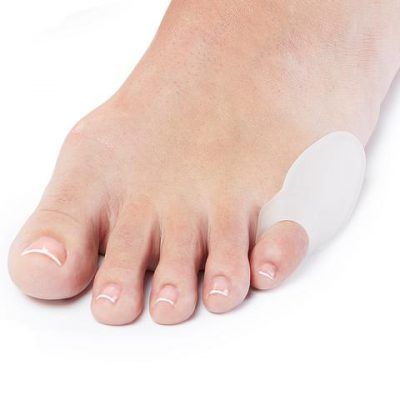 Hallux abducto valgus more commonly known as bunion. According to the systematic review conducted by Nix et al., it is estimated that around 23% of adults and 35% of elderly individuals have a hallux abducto valgus foot deformity, more commonly known as a bunion. There is a higher prevalence of women with the condition opposed to men, as well as a higher prevalence in the western developed world, which may just be due to a lack of data from developing nations.
Hallux abducto valgus more commonly known as bunion. According to the systematic review conducted by Nix et al., it is estimated that around 23% of adults and 35% of elderly individuals have a hallux abducto valgus foot deformity, more commonly known as a bunion. There is a higher prevalence of women with the condition opposed to men, as well as a higher prevalence in the western developed world, which may just be due to a lack of data from developing nations.
Characteristics:
Bunion deformities generally have three distinct characteristics: lateral deviation of the hallux towards the lesser digits with respect to the first metatarsal; medial deviation of the first metatarsal with respect to the second and a prominence of the first metatarsal head on the lateral side of the foot.
Diagnoses:
There are two main ways of diagnosing someone with a bunion or HAV, the first is for the patient to get medical imaging of their forefoot. Then bisections of the hallux, the first metatarsal and second metatarsals are taken and the angles are calculated. If the angle between the hallux and first metatarsal is 15 degrees or greater and the angle between the first and second metatarsal is 9 degrees or greater, then the patient is considered to have HAV (bunion).
Another method of diagnosing bunion is using the less sophisticated Manchester Scale which are images of feet at various stages of bunion development. The clinician uses those images as reference to determine if a client has bunion. This method is highly dependent on the clinician’s experience and judgment.
Aetiology:
The exact aetiology of bunion is not well known, it is said be a multifactorial condition with many risk factors. Some of these risk factors includes being overweight, having flat feet, increased first ray dorsal mobility, intrinsic and extrinsic muscle imbalances of the foot and footwear among other factors.
It is generally a combination of factors that lead to the development of an bunion. In this review, we want to determine if footwear, in particular high heel footwear can cause or influence the development of an bunion.
High heels and Bunion:
The idea that high heels are able to cause or contribute the development of bunion is based on two separate but interlocked theories. The first mechanical process involves putting the foot in plantar flexed position, this increases the ground reaction force underneath the first MTPJ causing the first metatarsal to dorsiflex and invert.
This movement leads to erosion of the sesamoidal osseous crest which in turn leads to instability of the joint, this gives a greater lever arm to the adductor halluces muscles during propulsion. The contraction of adductor halluces causes the hallux to move laterally. This eventually leads to lateral displacements of the flexor and extensor muscles relative to their previous position causing further joint displacement.
The second mechanism involves having a narrowed toe box which causes compression on the medial side of the forefoot. The foot will then compensate and adapt in order for the footwear to fit comfortably.
Bunion Treatment:
There are different treatment for bunion:
- Supportive Footwear
- Orthotics
- Injection therapy
- Combination therapy
- Surgery
Book an appointment now to see our podiatrist and determine a suitable treatment for your bunion now.
